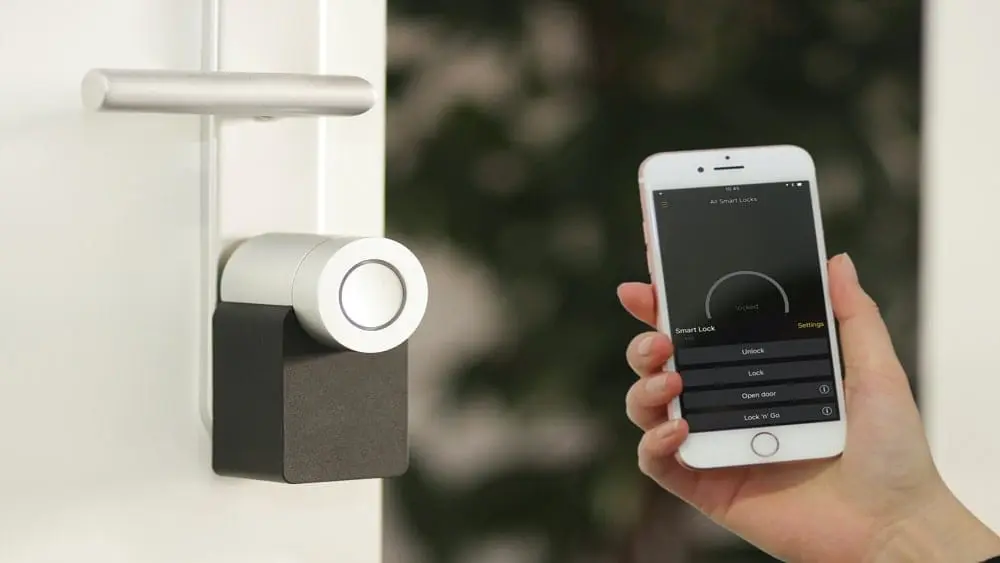
Ask affluent homeowners what’s important in their homes and chances are privacy and security will be among the top concerns.
As the value of homes and possessions increase along with an individual’s public profile, so too do security issues; and today the perception of security is apt to include a range of new vulnerabilities.
When it comes to protection, homeowners have more tools than ever literally at their fingertips. “Security has become easier to incorporate into our homes with technology,” says Wayne Visbeen, principal of Visbeen Architects in Grand Rapids, Mich. “We find clientele integrating everything from opening their garage door to lights to temperature control and having security as part of that integration. Our clientele can watch their front door in Michigan from their home in Florida from a mobile device. This allows security to be simple and seamless.”
Not only has the area of home security and protection accelerated at a remarkable pace, but smaller monitoring devices have changed the face of home security. “These are all great technological advancements, but my general warning, especially to ultra-high net worth individuals, is to be aware of the vulnerabilities of those technologies. The more technology that exists in your home, the greater the potential of vulnerability for hacking,” observes Scott Spencer, senior vice president and worldwide appraisal and loss prevention manager for Chubb Insurance.
Also, Spencer says, new devices might be sexy, but it’s important not to lose sight of the basics. Devices that alert you to problems with your home are great — unless you happen to be on a six-hour flight and you learn your house is on fire. “It’s nice that you know, but make sure a central monitoring facility or someone local can respond on a moment’s notice depending on your not being in a four-hour meeting,” he suggests.
Affluent homeowners should ensure their security system is on par with the value, size and complexity of the property. Spencer cites the example of a $15 million home with “an alarm component that you would see in an average home.” In a home of that caliber, he says, it’s important to use experts and not rely on the person who is installing the video and audio systems.
Protecting the perimeter of a property is as important as protecting the perimeter of the home. However, this requirement varies by the type of property and how often it is occupied. A brownstone in Manhattan might only need a surveillance camera at the door, while 400 acres in a rural area might require surveillance and alarms around the perimeter of the property.
Beautiful remote locations offer a high degree of privacy, but they often bring inherent risks including a longer emergency response time. Pointing to the huge growth of interest in properties in Wyoming and Montana, Spencer says, “when you are building a 600-acre ranch, you probably want to install a cistern and your caretaker might be a trained firefighter and you will want to install a home sprinkler system.”
Balancing aesthetics and convenience with security and protection is a challenge for upscale homeowners. “I see the use of fire detection equipment is not as good as it could or should be,” shares Spencer. Homeowners often place a higher priority on appearances. For example, some might be reluctant to install a smoke detector in some rooms because it might not match the ceiling or the molding. “That’s really important, but so is protecting the $11 million dollars of art that might be on the wall,” observes Spencer.
Insurers say they are seeing a record number of claims for water damage. In part, it’s because of the way spaces in homes are being used and finished. Instead of linoleum and wood paneling, finished basements have home theaters, spa rooms and lots of electronics. What could be cleaned up in the past with a mop now entails hundreds of thousands of dollars in clean up. Such losses are easily preventable today with sensors that not only detect water, but also shut off the flow of water. “This is especially important for high-net-worth clients who have multiple properties and who walk away from their lake house only to come back months later to find it completely flooded from a pipe that has been running for three months,” says Spencer.
“The presence of sensors that can literally monitor almost anything is dynamically changing home security,” observes Spencer. “It’s that fine line between protection and convenience that we are forever walking. You would be surprised how many more people are interested in monitoring the temperature of their oven than the water flow in the basement.”
Shelter From The Storm
Some of the most desirable locations, waterfront or mountaintop, are also ones prone to natural disasters. Make good choices when you buy a treetop home, Spencer urges. Some of the simple things buyers can do include managing vegetation so things are trimmed back 100 feet from the house. Look for superior construction and also, Spencer says, don’t buy a wood-shake house in a wildfire prone area.
Waterfront locations are often subject to floods or wind and they are also locations for disappearing walls. “It’s beautiful to have a glass wall facing the ocean but make sure the glass is impact resistant and has been installed properly,” says Spencer. Look for a well-engineered product that meets the highest codes. Even ask to see the engineering report to see that a product is compliant. “All it takes is something smashing through that glass and the house is virtually gone,” he adds.
New homes are often more storm worthy, thanks to advancements in building technology and plans in some areas that also take potential storms into account. “Designing a safe room, or otherwise structurally reinforced interior room, for protection from inclement weather is often one of the first things designed into a new house plan,” says Rhyse Altman, an architect designer with Visbeen Architects.
Additionally, in coastal or flood-prone areas, new methods of construction include putting the home on stilts or designing the main level in such a way that water can flow through the house without compromising structural integrity. But, Altman says, “It all starts with having a deep solid connection to the home’s foundation system.”
Often homeowners are tempted to finish off levels designed for a storm surge. Spencer’s advice: “Don’t invest big money in volatile electronic components in places that are designed to have flood waters washing through them.”
Backup Power
No longer a nice-to-have extra, backup power is becoming a must-have in some regions of the country, especially for high-end homeowners. “We are definitely hearing more from our clients and buyers about back-up generators in case of power outages,” says Brian Brunhofer, president of Meritus Custom Builders and Meritus Homes in Chicago. “In the infill areas where we are building custom spec homes, we now typically put in at least a rough-in for a backup generator. These neighborhoods have older infrastructures, older large trees and overhead power lines, all of which cause concerns for power outages in big storms. Requests for backup power sources aren’t as prevalent in the next ring of suburbs out, where the engineering of communities is more updated and the infrastructure is newer and efficiently installed. Also, the higher the price point of the home, the higher the interest to invest $8,000 to $15,000 in this type of feature.”

Camilla McLaughlin is an award-winning writer specializing in house and home. Her work has appeared in leading online and print publications, such as Yahoo! Real Estate, Unique Homes magazine and Realtor magazine. She has also freelanced for the Associated Press.
 After the Move: 10 Steps to Settle into Your New Home
After the Move: 10 Steps to Settle into Your New Home